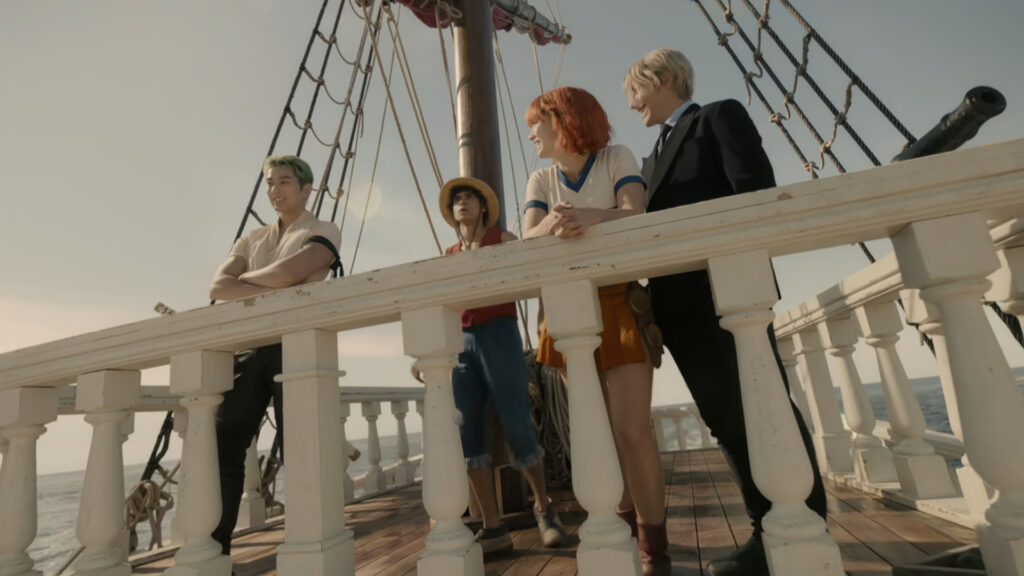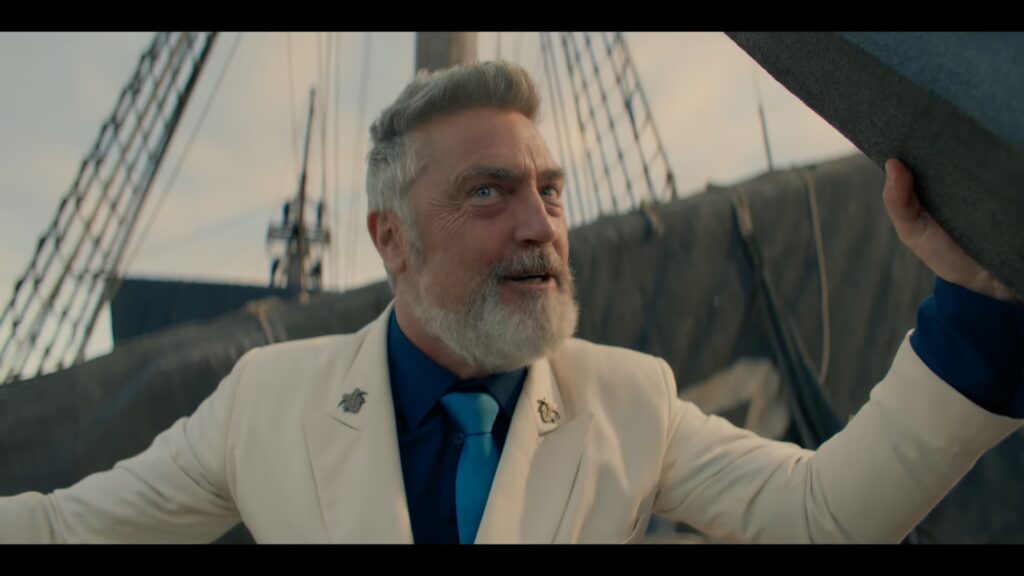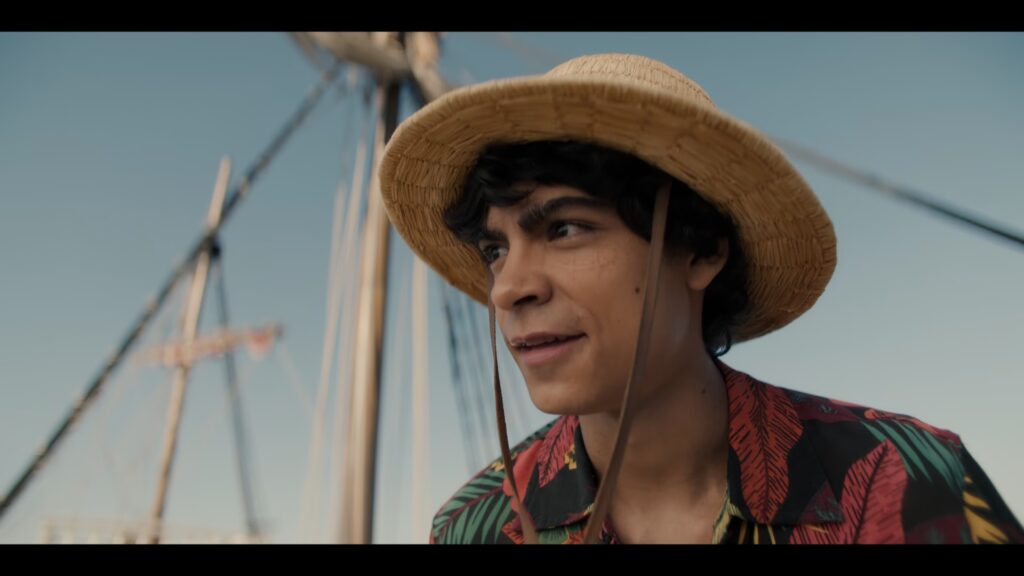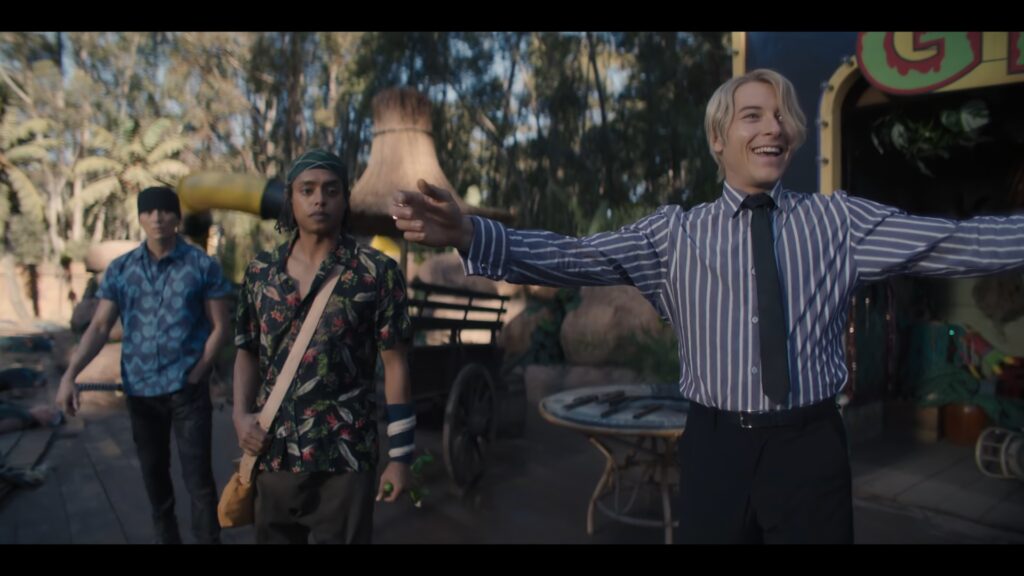The world of anime has been graced by a wave of excitement with the release of the One Piece live-action series on Netflix. For many, including myself, the bar was set high after hearing early reviews, but the show managed to surpass these expectations. After immersing myself in the adventures for over eight hours, I’m eager to share my initial impressions, with the promise of a more detailed exploration in a separate article.
Production Quality and World Immersion
The One Piece live-action series mesmerized viewers with Gol D. Roger’s execution, boasting remarkable production quality. Characters brought the beloved crew to life seamlessly, delivering a visually and acoustically immersive experience. The diverse islands, the iconic theme song, and its variations all contributed to enriching the overall experience.
The heartwarming “We Are!” cameos emotionally touched many, especially long-time fans who found them particularly resonant. However, certain aspects of the series felt somewhat rushed. For example, the live action depicted the Straw Hat crew bonding rapidly, in contrast to the gradual development seen in the anime over numerous episodes.
Notable Performances
Vincent Regan’s portrayal of Garp, imbued with an Irish accent, resonated deeply, capturing his stern yet affectionate bond with Luffy.
Jeff Ward’s rendition of Buggy added a delightful layer of humor, consistently delivering scenes that left me in stitches. They expertly transposed his comedic essence from the anime, preserving its hilarity without directly copying it.
Alexander Maniatis as Kuro skillfully oscillated between his overprotective butler persona and his cunning pirate captain self. His pursuit of Kaya through the mansion sent genuine shivers down my spine, crafting an unforgettable sequence.
The mansion scene, although it deviated from the source material, showcased the series’ skill in executing and elevating pivotal moments.
Visual Effects and Character Adaptations
The visual effects were generally impressive. However, a few minor exceptions stood out, notably Luffy’s balloon and certain moments during his fight with Arlong. Adapting Arlong’s unique abilities posed a significant challenge, but the end result exceeded expectations. Despite initial concerns stemming from the trailers, the portrayal of Arlong turned out to be even better than anticipated. Considering the complexity of his abilities, especially his distinctive teeth and nose, as depicted in the anime and manga, the adaptation performed remarkably well. The production executed the fight scenes with remarkable finesse, despite their undeniable demands.
The Straw Hat Crew and Emotional Moments
The heart of One Piece undeniably lies in its Straw Hat crew, and their casting was truly exceptional. While Luffy occasionally adopted Batman-like tones, his usual speech felt more fitting. Zoro’s brilliantly executed gruff and introverted character flawlessly depicted his aversion to social interactions. The actors flawlessly portrayed the dynamic between Zoro and Sanji, although they could have injected more playful banter. Nami assumed the responsible older sister role with convincing finesse, while Usopp maintained his timorous persona while heroically stepping up when necessary. The cast seemed tailor-made for their roles, with Mackenyu’s experience being a delightful surprise.
Emotional Impact
Despite certain narrative changes, the emotional moments within One Piece live-action remained poignant. From Shanks entrusting his hat to Luffy, Zoro’s promise to Kuina, and Sanji’s heartfelt gratitude and apology to Zeff, these moments resonated deeply. Luffy emotionally passed the hat to Nami in a poignant scene. However, Zoro’s declaration never to lose again didn’t quite have the same impact as in the anime and manga. The absence of Don Krieg (with Mihawk swiftly dispatching him) created an odd narrative gap during Zoro’s proclamation.
Usopp’s Story and Adaptational Choices
Usopp’s narrative was one aspect that felt underexplored. The decision to omit the Usopp Pirates and Jango, as well as substantial parts of the Black Cat Pirates, made sense due to the necessity of condensing content. In the original story, the villagers learned about the impending arrival of the pirate crew, leading to Usopp’s attempt to warn them and their subsequent rejection. It felt awkward that he repeated the same scenario after discovering Kuro, Buchi, and Sham in the mansion, without hinting at their imminent arrival. Usopp’s role in defending Kaya and defeating Jango was omitted, depriving him of a character-defining moment. In the manga, he chose to let the villagers believe he was lying, showcasing his growth. However, in the live-action version, the villagers were left wondering when he would return, altering the impact of this arc. Despite this, Usopp still had his victorious moments against the Arlong Pirates.
Additional Highlights
Additional notable mentions include the consistent presence of Bogard throughout the series, adding depth to a character seldom seen in the manga and anime. Shanks and Mihawk’s appearances were undeniably cool, setting the stage for future developments.
Conclusion
In conclusion, the One Piece live-action series boldly diverged from the source material, presenting fans with a fresh and enjoyable take on the beloved saga. It successfully adapted the original story while introducing compelling variations suited to its medium. The impressive cast quickly won me over, leaving me eagerly anticipating more. Notably, the introduction of bounties, original and captivating, along with inventive logo variations, added unique elements to the adaptation. While some aspects felt hurried or omitted, the series was a testament to the potential of live-action adaptations within the anime world. The differences only served to enhance the narrative, leaving me yearning for more adventures. Bring on Smoker, and may the Grand Line continue to dazzle us!




















![[AnimeKayo] Disastrous Video Games of 2023](https://animekayo.com/wp-content/uploads/2024/01/AnimeKayo-Disastrous-Video-Games-of-2023-360x180.webp)






![[AnimeKayo] Assassin's Creed Mirage](https://animekayo.com/wp-content/uploads/2023/07/AnimeKayo-Assassins-Creed-Mirage-360x180.webp)






















